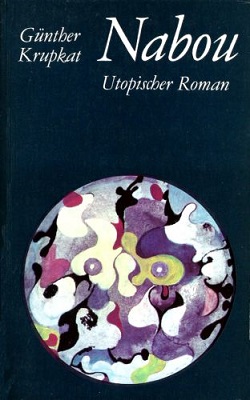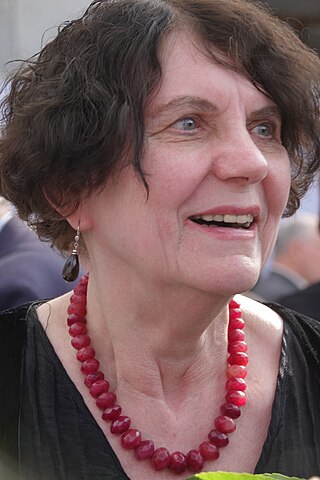
Andromeda: A Space-Age Tale, is a science fiction novel by the Soviet writer and paleontologist Ivan Yefremov, written in 1955–1956 and published in 1957. It was translated into English as Andromeda: A Space-Age Tale by George Hanna. The novel predicted some future inventions. The German translation of the novel which was highly censored was serialized in the East German popular science magazine Jugend und Technik in 1958. It was made into a film in 1967, The Andromeda Nebula.

Manfred baron von Ardenne was a German researcher and applied physicist and inventor. He took out approximately 600 patents in fields including electron microscopy, medical technology, nuclear technology, plasma physics, and radio and television technology. From 1928 to 1945, he directed his private research laboratory Forschungslaboratorium für Elektronenphysik. For ten years after the World War II, Ardenne was one of many of the German nuclear physicists in the former Soviet program of nuclear weapons, and was honored with the Stalin Prize by the former Soviet Union.

The MRB Z 1013 was an East German single-board computer produced by VEB Robotron Riesa, which was primarily intended for private use and educational institutions. It was powered by a U880 processor and sold together with a membrane keyboard. Initially, the kit was equipped with 16 kilobytes of DRAM, which was later replaced by a 64 KB version.

Günther Krupkat was a German fiction writer, known as one of the leading science fiction writers of East Germany.

Als die Götter starben is a 1963 science fiction novel by German author Günther Krupkat about contact between humans and an alien race from the distant planet "Meju." After the discovery of alien diaries on the Martian moon Phobos in the 21st century, a frame narrative tells the interconnected stories of human power struggles in ancient Mesopotamia and alien flight from a distant planet following a cataclysm. A 1989 poll ranked it as the seventh most popular East German science fiction novel.

Nabou is a 1968 science fiction novel by German author Günther Krupkat. Written as a sequel to his 1963 novel Als die Götter starben, Nabou narrates an expedition into the interior of the Earth. A member of a research team investigating Earth's crust is revealed to be a biorobot, or "Biomat," left by an advanced spacefaring people called the Mejuans. The encounter between the humans and the alien representative is a comparative class encounter between advanced socialist aliens and human societies in a "lower stage" of development without open class conflict. A 1989 survey ranks it as the 13th most popular East German science fiction novel.

Der Traummeister is a 1990 East German science fiction novel by Angela and Karlheinz Steinmüller. It is set in the same fictional universe as their 1982 novel Andymon and on the same planet as their earlier collection, Spera. Written in the last years of the GDR, The Dream Master offers a critique of centralizing, static utopias and, like other GDR literature of the seventies and eighties, thematizes the relationship between individual and collective, privileging the role of individual subjectivity. Critic Sonja Fritzsche has read the novel as a commentary on the situation in East Germany just before the fall of the Berlin wall.

The Gesellschaft für Sport und Technik (GST), lit. "Sport and Technology Association", was one of the East German "Mass Organizations". Officially, it was established to structure the free time of young people interested in sports and technology in group activities, provide the required technical equipment, cultivate and support technical sport disciplines, and arrange for events like motor and shooting competitions. The association also contributed to the militarization of East German society by organizing together with the National People's Army the country's mandatory pre-military training in schools, universities and workplaces. It was established on 7 August 1952 and disbanded in early 1990. The association published a monthly, 32-page periodical, S+T.
Karsten Kruschel is a German science fiction writer, essayist and critic, who lives near Leipzig. His best known works are the Deutscher Science Fiction Preis winning novels Vilm and Galdäa. Some of his short stories were nominated for or won the Kurd-Laßwitz-Preis.
Hermann Weber was a German historian and political scientist. He has been described as "the man who knew everything about the German Democratic Republic".

Michael Roth was a German engineer and professor of automation, specializing in microprocessor technology, computer science and sociology as well as philosophy of science. He was one of the pioneers in the area of computer engineering in Germany.
Gerhart Hass was a German historian. His approach reflected the Marxist prism through which East Germany's historical establishment viewed their subject. He worked at the History Institute, part of the Berlin based (East) German Academy of Sciences and Humanities, where from 1974 he was a professor. His work concentrated on the History of Fascism in Europe and the Second World War.
Sibylle was a bimonthly fashion magazine that was published in East Germany and then in Germany from 1956 to 1995. The magazine was subtitled Zeitschrift für Mode und Kultur. It is known as the most famous fashion magazine of East Germany and was called Vogue of East Germany.

Regina Scheer is a German writer and historian.
Verlag Technik based in Berlin today is the remaining part of its incorporation into the Huss-Medien GmbH.
Neues Leben was a monthly youth magazine which existed between 1953 and 1992. It was started in East Germany and survived the German unification. It was briefly published in Germany until 1992.
Atze was a monthly comics magazine which was published from 1955 to 1991 in East Germany. It was the first comic publication in the country and was one of the state-controlled publications targeting youth.










